Schroeder-Thomas Splint
IF YOU NEED MORE INFORMATION ON MAKING A SPLINT email FOR MORE Info
Some years spring comes early, calving is uncomplicated. Other years, like this one, spring is nowhere around. Despite the cold temperatures the cows deliver calves. As a precaution we brought the cows in the barnyard where they could get under the shed roof. There's protection from freezing rain or snow here. Under the shed are straw bales and stalk bales for bedding. Round bales of hay fill the feeders under the roof and in the yard outside. Most of their days are spent in the open air, they come in freely when the weather is severe. The calves prefer the open air, too. Lying up against the stalk bales and hay feeders the calves are barely visible. On March 20, the first day of spring, the temperatures in northeast Iowa struggled to get past the freezing mark. The calves all tucked themselves into the bedding. The cows standing over them added another layer of protection.
In the morning we noticed a lame calf. His leg was hanging at an awkward angle, loading him into the truck we took him to the vet's office. X-rays confirmed the hind leg was fractured cleanly through. Our best guess is that he was sleeping in the hay when one of the cows stepped on him. The vet offered two options; euthanize him or do nothing and let the leg hang. Discouraged, Keith started researching other options. He discovered a description for the Schroeder-Thomas Splint. Keith and I made careful measurements of the calf's leg. From this we drew a template, Keith welded steel rod exactly as presented in the instructions. The angles of the frame are critical for immobilizing the leg. The vet couldn't have been more supportive. He anesthetized the calf, reset the bone, and padded the splint and taped the leg into the frame. Throughout the procedure the cow bawled incessantly to her calf.
When the leg was set the calf and the cow were closed in a quiet area under the shed. So far the calf is adjusting well. He's able to get up and down, nurse, and move (awkwardly at first but he's getting better). He's being supplemented with comfrey to help heal his bones, and Hypericum.
UPDATE: We've had several questions about the splint and how the calf responded. Here's a picture of a makeshift splint we made for him, to add extra support for the leg, after the Schroeder-Thomas Splint was removed. His leg was wrapped in vet wrap, with a wooden splint placed on the outside femur for support, then it was wrapped in duct tape to secure it. The splint/bandage was replaced every couple days. Eventually it was removed and he was able to keep pace with the herd.
Click Here for pictures shared by others
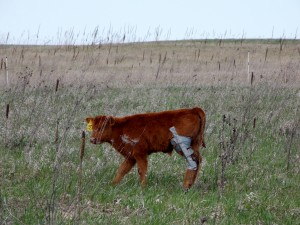
Tracie from Montana made a few changes to the splint. Here's a link to an updated version Thanks for sharing, Tracie!
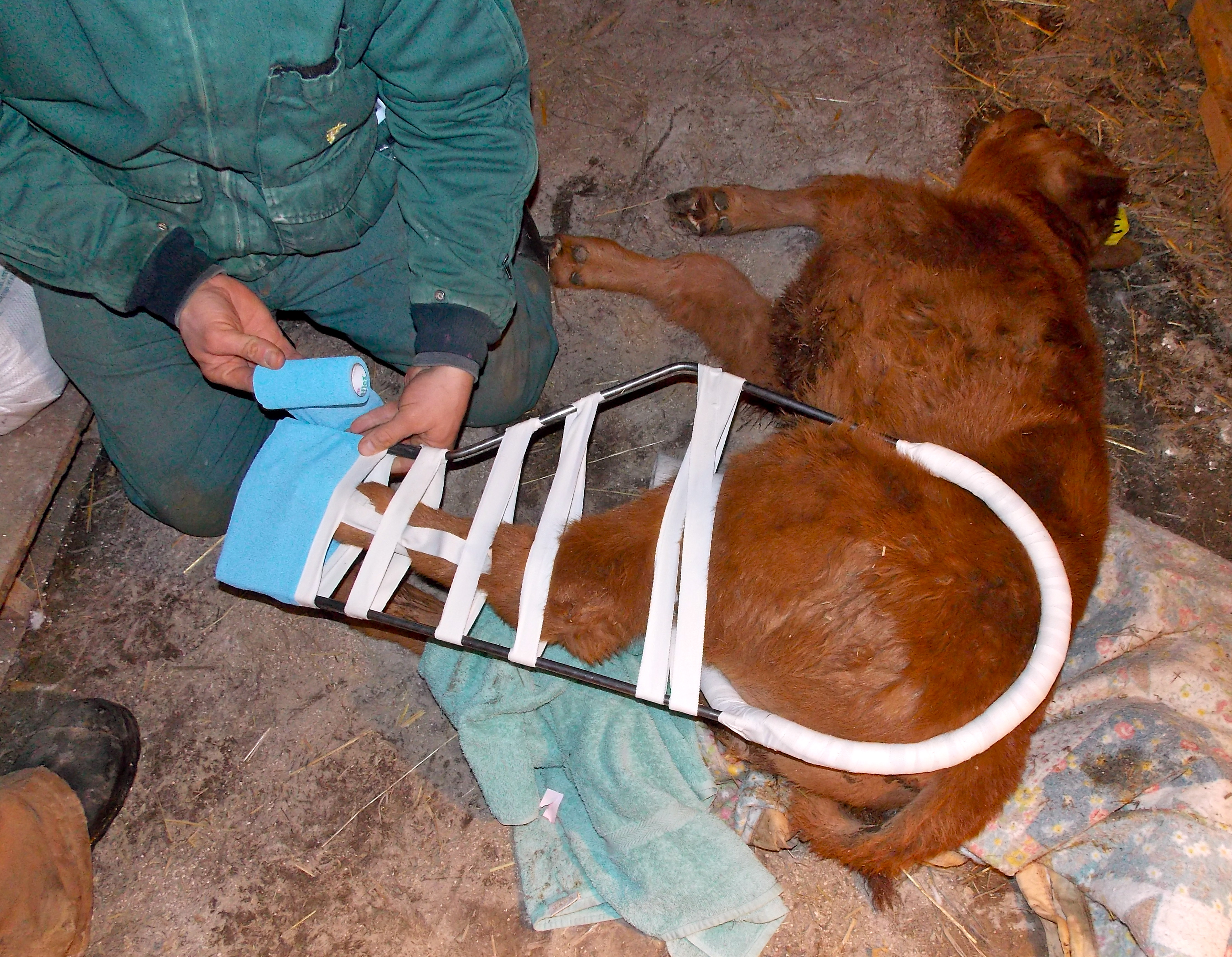
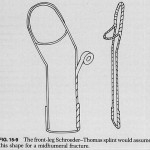
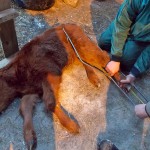
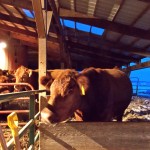
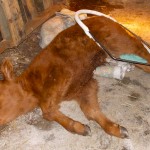
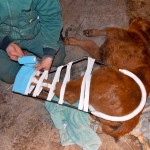
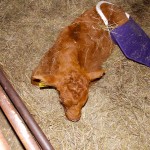
Thanks for your detailed pictures of the Thomas splint. Yesterday while getting the cows into the corral and barns for the blizard today I found my day old calf with a broken back leg. the pictures came in real handy to make the splint. Hope I did it right and it works. Thanks again.
If you need the detailed instructions on how to make and bandage the splint let me know and I'll email them to you. Best of luck with your calf!
We had a hours old calf get kicked by another cow resulting in a broken femur. Our attempt at a Schroeder-Thomas Splint was not a complete success.
Would you be kind enough to e-mail me the instructions?
Thank you in advance!
Good luck with your calf. This splint worked for us. We used aluminum tubing and followed these instructions. Be sure to use vet wrap and fix the leg to the side of the splint, your objective is to hold the leg in place, the 'hip ring' at the top of the splint will move with the calf. We used string to measure the diameter of the upper thigh-hip and then measured the length of the leg. We had to make some adjustments to the length. The calf moved awkwardly at first, he was kept in a free stall with the cow for a few days and then moved with the herd. The will show drawings of each step to splinting the leg. If you need more information we'd be happy to help.
Thanks for posting your experience. The links are not working for me. Any suggestions? We have a 3 week old Devon bull in this splint, it's been 2 weeks. Have to keep taking him in to the vet for adjustments and since Mom is not tame, he's been in a nearby barn feeding from a bottle. He's still in the stall and is getting quite frisky. You say you let your calf out with the herd after a few days? How long was he in the splint? How much comfrey/hypericum did you use for how long? We started with homeopathic arnica & hypericum till the splint was set then switched to comfrey leaf tea and homeopathic symphytum. Will begin solomon's seal next week. Would love to get him back with the herd ASAP.
Thanks for your reply!
Sorry about your calf. I'm not sure why the links aren't working I'll send you the info I have on the splints. Our cows are very calm because they're worked with every day. This calf and his mom were kept together i a large area for a week or two and then moved with the herd. He was in the splint for about 3 - 4 weeks. After that we made a splint for him. He healed, his leg was ugly but he kept up and didn't have any other issues. We consulted a vet (by phone) who writes for Acres USA Magazine, Dr. Sheaffer. He had written an article about a horse with a broken leg that was being treated with hypericum. I called and he gave us great advice. We ordered the product through his office. Here's a link to his book; Homeopathy for the Herd Good luck.
Thanks for all your great info, Glenda!
Please let me know if you need any help in the future. Best of luck!